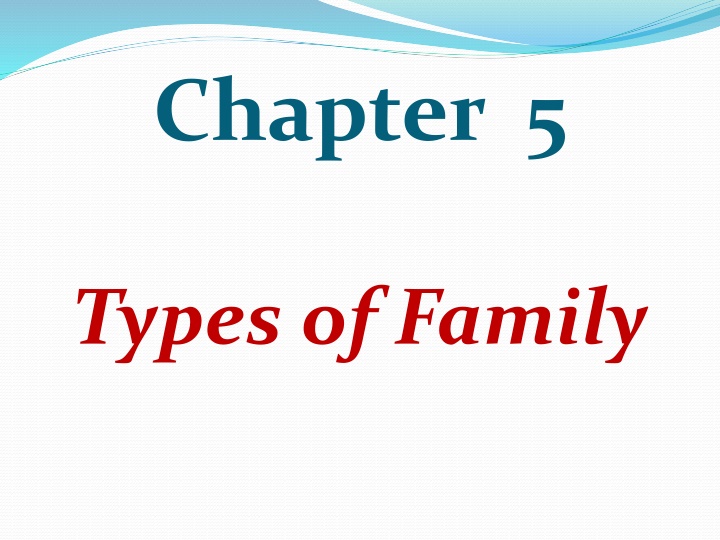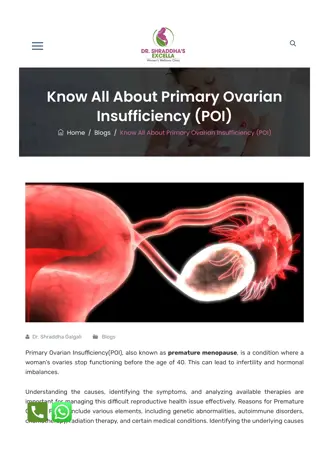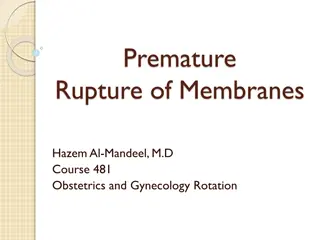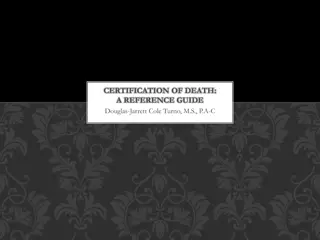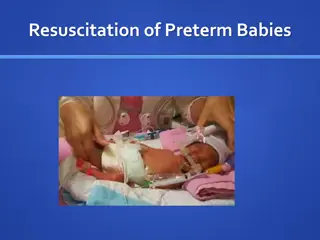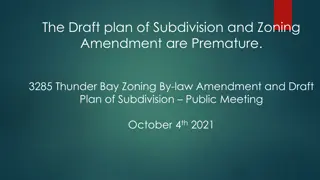Types of Family and Financial Impact of Premature Death
"Explore the various types of families and the significant financial impact of premature death within different family structures. Understand the need for life insurance to cover expenses and ensure financial security. Discover how different family compositions influence the amount of insurance required in case of an untimely death."
Download Presentation

Please find below an Image/Link to download the presentation.
The content on the website is provided AS IS for your information and personal use only. It may not be sold, licensed, or shared on other websites without obtaining consent from the author.If you encounter any issues during the download, it is possible that the publisher has removed the file from their server.
You are allowed to download the files provided on this website for personal or commercial use, subject to the condition that they are used lawfully. All files are the property of their respective owners.
The content on the website is provided AS IS for your information and personal use only. It may not be sold, licensed, or shared on other websites without obtaining consent from the author.
E N D
Presentation Transcript
Chapter 5 Types of Family
Types of Family Premature Death: outstanding unfulfilled financial obligations as: cost of living & education & payoff mortgage. death of family head w Cost of Premature Death: 1-PV of familyshare of futureearnings. 2-Cost of funeral, medical bills & tax. 3-Reduction of standard of living. 4-Emotional grief, loss of parental model & children counseling & guidance. Chance of Dying Prematurely: 3 reasons: heart disease, cancer & stroke.
Types of Family Financial Impact of Premature Death: 1-Single married person, need small amount of life insurance to cover burial cost & uninsured medical bills. People: divorced or not
2-Single Parent Families: widow, divorced or separated spouse with children need great amount.
3-Two Income Families: a)both wife & husband work without children so, no need for life insurance or they need small amount.
Types of Family or b)both wife & husband work with children (one outside home), if spouse work outside dies they need large amount of ins. (living cost) & if spouse work inside dies so, larger amount of insurance is needed (costof living & childcare).
4-Traditional Families: wife & husband with children & one works outside home, they need large amount of life ins. if working spouse dies (cost of living) or larger amount if non- working spouse dies (cost of childcare & cost of living).
Types of Family 5-Blended widowed remarried a spouse w children need large amount if one dies & need the highest amount of insurance if working spouseor bothdies. Families: spouses divorced w or children
6-Sandwiched Families: son or daughter with children is supporting one or both parents so, they need huge amount of life insurance.
Types of Family Amountof life insurance toown : 3 approaches 1-Human lifevalue approach. 2-Needs approach. 3-Capital retention approach 1-Human life value approach: PV of family share of deceased future earnings & calculated as follows: a) Calculate average annual earnings. b) Deduct: tax, ins. prem.& his personal needs (1-2= share of family earnings) c) # of years (retirement age yourage) d) Insurance amount = PV of family earnings share.
Types of Family Ex: Ali, age 40, earns $12,000 annually, tax, insurance premium & personal needs $4,000 married & has 3 kids, retired at 60. Solution: Insurance amount = $8,000 x PV of annuity for 20 years at 8% (8,000 x 10,603599 = $84,829. Advantage: easy to calculate. Disadvantage: a)Other sources of income not considered. b)Assumed constant earnings & expenses. c)Amount allocated to family isn't constant & depend on divorceor birth.
Types of Family d)Ins. amount depends on discount rate which is difficult to predict. e)Ignored inflation effect. 2-Needs Approach: family needs if family head dies minus existing assets & life ins. Family Needs: a)Estate clearance fund (burial exp., medical bills, debts, tax). b)Income during readjustment period (1-2 years after death). c)Income fordependency period (kids=18).
Types of Family d)Life income to surviving spouse if doesn't work (income in blackout period from time social security stop until resume, income to supplement social security (60 year)). e)Special needs: education, mortgage pay off, emergency fund: home & carrepaircost. f)Retirement addition retirement benefits (annuities & investments). needs for family's security, head: employer in to social
Types of Family Illustration of Needs Approach: 1-Amount needed to meet: Cash, Income & Special Needs. 2-Present available total assets: Pension, Fund, Ins, Property, Social Security Benefits. 3-Amount of life ins. needed: Total Needs - Total Assets (1-2) Advantages: 1-Reasonable & accurate. 2-Consider assets & othersources of income 3-Consider needs fordisabilityor retirement.
Types of Family Disadvantage: 1- Difficult to predict future needs & depends on assumptions. 2- Family needs change (divorce, death, birth) so, must periodicallyevaluated. 3- Ignore inflation, then ins. amount will be less than actual needs. 4- Ignore preservation of estateassets for heir.
Types of Family 3-Capital Retention Approach: produce the capital needed to provide needed income to the family. Stepsof Calculating Amountof Insurance: 1-Prepare a Personal Balance sheet: Assets (death benefits from: pension, group ins. & other source, investments, property) & Liability (mortgage, auto loan, debts, bills). 2-Determine the Amount of Income-Producing Capital: Amount that produces income to the family=Total Assets (Liabilities, Cash Needs: maintenance fund & Non-Income Producing Capital: car, home) education, emergency &
Types of Family 3-Determine the additional needed capital =Additional Needed Capital Interest Rate Additional Needed Capital = Needed Income - Available Income (pension, social security). Advantages: 1-Easy to calculate, understand & preserve capital. 2-Income of emergency & education fund hedge inflation. 3-Consider needs fordisabilityor retirement. Disadvantage: produce large amount of insurance.
Types of Family Methods for Providing Life Insurance Protection: 1-Yearly Renewable Term Method: provide insurance for 1 year w right to renew it each year without prove of insurability but w higher prem. (bad health renew & good won't-adverse selection), so, it is not practicable for long time protection. 2-Level Premium Method: insured pays equal prem. each year as long as he still alive up to 100. Prem. is more than natural prem. during 1st term & less 2nd term & the differences are called legal reserve.
Types of Family Purpose of Legal Reserve: help providing whole life insurance w level (equal) premium & used in later years to supplement deficiency in prem. Net Amountat Risk = Ins. Amount Legal Reserve Insurance Amount = Legal Reserve + Net Amount at Risk Amountof Insurance = Saving + Protection Element Cash Value: if insured needs to cancel the policy (surrender), he has the right of (surrender value) but after 10-15year legal reserve
